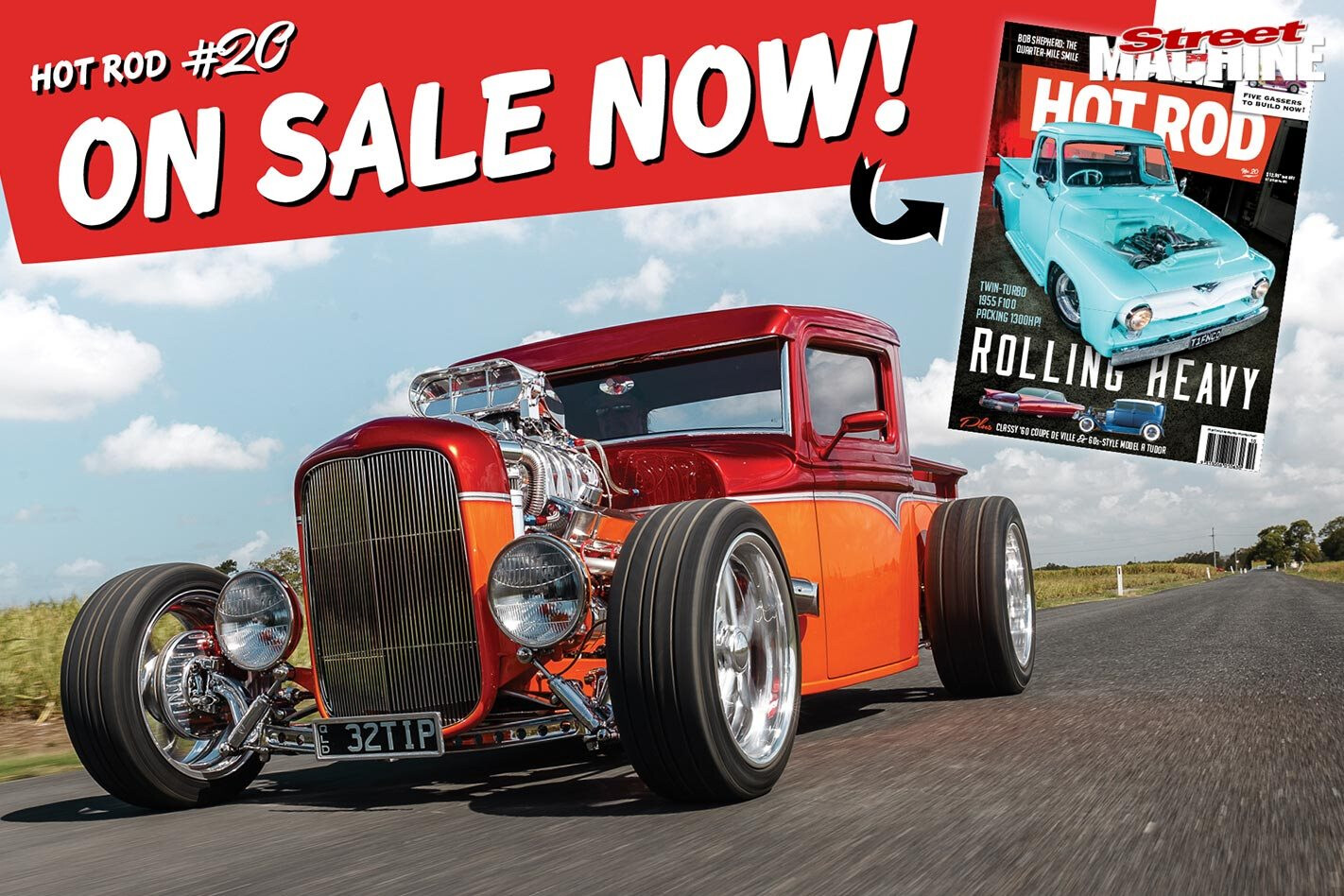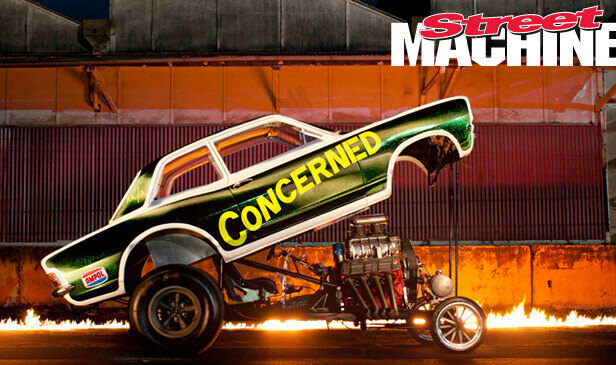Robert Williams is a traditional hot rodder to his boot straps, and a man who knows a thing or two about why we do the things we do. He is also one of the greatest American visual artists of the past 50 years.
First published in Street Machine’s Hot Rod 11 magazine, June 2013
The man is unlike any hot rodder you will ever meet, although he probably wouldn’t appreciate the sentiment. Uniquely he has, for the past 50-plus years, immersed himself in two very different worlds. On the one hand, he is a hot rodder, a pioneer of the lowbrow underground, and was one of the key members of Ed ‘Big Daddy’ Roth’s studio. On the other, he is a world-renowned artist.
Williams earned his hot rodding spurs back in the 1950s, when there was still a sense of the outlaw about building your own car and driving it fast. As an artist, his insight and attention to detail prompted Von Dutch to comment, “Williams paints the way Salvador Dali tries to paint.” Yet, as successful as Williams was, and still is, at straddling these two worlds, the art community and hot rod culture make poor bedfellows. “When Roth went out of business I was living in the bohemian art world,” explains Williams. “It was ten cultures away from hot rods. I kept the two worlds separate and I didn’t mention anything about hot rods because I would’ve looked an idiot talking about hot rods around intellectual people.” Enough said.
Nevertheless, Williams’s balancing act has given him a fascinating way of looking at hot rods and in turn he is able to articulate and make sense of why we build and enjoy the cars we do…
What is it that makes people so passionate about traditional hot rods?
I take it back to a collector’s psychology. 150 years ago, in Europe, people started collecting armour. Now, the thing about something that is a product of the past is that it has an imposed soul. A suit of armour will have been in parades, possibly battles, maybe even seen blood.
That suit of armour is probably also a composite of five or six different suits of armour that have been cobbled together, like a hot rod is cobbled together. And it took craftsmen to make it.
There was also a lot of generic armour that was used by low officers and foot soldiers that has no provenance, but you still know it has a history and a soul. Weapons and guns are the same way, they have an aura of romance glowing off them.
So it’s the history that makes the hot rod such a compelling idea?
Not only that. The thing about machinery is that it also functions and has a pseudo de facto life. Old locomotives, steam tractors and automobiles all generate action.
Is that what first attracted you to the hot rod?
I was born in 1943. When I was real young you could actually buy a Duesenberg as a used car; right after World War II people were just starting to collect those things. But the cars had to be in good shape and they had to have a provenance.
At that time I lived in the South and my father owned a number of stock cars, so I was around race cars from a very early age. These cars were primarily made from old Fords. I would go to the race tracks and see these cars from the 30s, that I wasn’t familiar with from the streets of the 50s.
They were kind of awkward and narrow and they had these box tops with flat windshields. To see them storming around at high speed with their flashy paintjobs, most done with a brush, was gothic and dramatic.
Was growing up in the southern states a good thing for a would-be hot rodder?
Well, by looking at the newsstands I found out that I was culturally isolated from other younger people who had the same interest. I also found out that there was such a thing as a hot rod and it had sprung from these old race cars.
You know, when you look at an old car you can imagine how someone bought it from new and put their family or friends in it. And now it’s out there at the race track or drag strip competing. To me it’s like there is an invisible tunnel of ghosts behind that car, and that is really romantic.
How did you get started in hot rodding?
I got into hot rodding in the early 50s. Now, hot rodding goes back way before that. The dry lakes was the second step in hot rodding’s evolution and was the most obvious thing to do with a street hot rod.
But the whole thing really sprung off the speed equipment made for dirt track racing around the time of the First World War. The development of sprintcars really influenced the hot rod. When I came into it I was a lost sheep that would follow in any direction, but I did have this thing for those early V8 Fords.
Later I got into Ts, and then the Model A, and later I got hung up on the Deuce.
What do you think of as being the archetypal hot rod?
In the late 50s and early 60s it got pointed out to me that the roadster was the most important and significant of all hot rods because it was the closest to a race car.
Even off the showroom floor it was a sporty, speedy vehicle; no one practical bought a roadster. You had to have a sense of bravado to have one because for another $50 or $100 you could drive a sedan or a coupe.
And is there an archetypal period for traditional hot rods?
My fixed point in time for hot rodding is around 1955. My ’32 could have been built then; it’s got a Chevrolet motor in it, it’s got the 15-inch wheels. I bought and built it not to show off to anyone.
I got it because I was just totally absorbed in the romance of those old hot rods. I finished the car just before hot rodding got into appreciating its past. Hot rods were pretty cheap back then.
That appreciation of the past and that romance has not always been there for the hot rod, though, has it?
You have a mass of car people who are intellectually impacted: they can figure the parts and they can run around with each other drinking beer or watching the game, but their idea of a hot rod was to take an old car and make it like the inside of a Learjet.
They would fit tweed interiors, hidden hinges, make them real sleek and finish them in pastels. In other words, they would take any semblance of an old car and strip that away. This was all about peer gratification and it was also about having a car you could take your wife out in and she would be happy.
Now, what you have to understand about hot rods is that right up to that point women hated f**king hot rods; they hated them. The movie scenes showing girls going wild in hot rods are bulls**t. You couldn’t get women in the hot rods because these cars were noisy, they stunk, they messed her hair up, they attracted the police and they broke down.
There was no positive point to that car for a female. Now, custom cars were kind of different. A custom car could attract women because it was all looks and comfort: my statement on that is a custom car will get you the pussy, a hot rod will get your mind off of the pussy.
Can you sum up what the essence of a hot rod is?
The hot rod was a wild, dangerous, ribald vehicle. Like a four-wheeled motorcycle, you could get killed in the damn thing and you always had trouble with it. I was so much attracted to them.
Those sleek modern interpretations weren’t troubled by provenance or romantic history dangling off the back. I function in this sentimental world where there was a before.
How hard has it been to live in both the art world and the hot rod world?
Hot rods are an indulgence to me; I make my living as an artist. I function in an art world that I have had to create. In the hot rod world I’m just a guy with a car. I have no aspirations to be some hot rod big shot.
But I do have these egotistical aspirations in the art world. I started an art form and had to launch a magazine [Juxtapoz] to support it. It’s only recently that the hot rod world and the art world have recognised each other.
The feminists hate it. The art world is run by extremely liberal people and the hot rod represents the decay of the environment, so the hot rod will never be accepted by them. Hot rods will be tolerated and marginalised, but they will never have any real influence even though they come with pin-striping.
It’s been great to watch the rise of lowbrow art. Do you expect this to continue?
You had Paris, France as the capital of the art world for 200 years, then it was New York. I think Los Angeles could be the next capital of the art world. I say that because of what has become known as ‘lowbrow’ art. Lowbrow art is the disdained art.
On the West Coast you have hot rod art, you have biker art, you have tattoo art, you have skater art, you have surfer art, you have comic book and movie culture. You have all these arts that require people who can draw but who aren’t tolerated in the fine art world.
Many thanks to Robert and Suzanne Williams. Check out www.robtwilliamsstudio.com




Comments